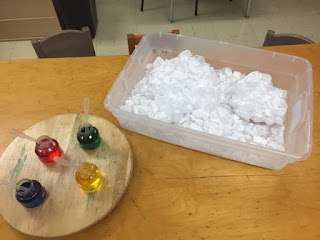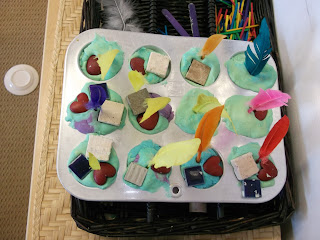Fizzy Ice
Exploring science is an exciting and wondrous part of early childhood. To carry out their scientific “wonderings,” children need time to explore and discover scientific concepts in risk-free, playlike settings. It is through these repeated experiences involving interaction with people and materials—the physical and social environments—that children construct their own knowledge (Piaget, 1952; DeVries & Kohlberg, 1990). When children are interacting with materials, observing, questioning, thinking, making predictions, and experimenting to confirm their ideas in a meaningful setting, they are making maximum use of the brain’s capacity for learning (Bredekamp & Rosegrant, 1993).The following activity during one of our Young Explorer Sessions provided the perfect opportunity for our young visitors to explore and investigate properties of ice. The language captured by our facilitator provides a glimpse into the rich learning that was taking place that morning.
For one of our Young Explorers programs this January we chose to explore ice….Fizzy Ice at that!
Here are the supplies we needed:
• 2 Large bags of ice in a big container
• Vinegar.
• Water Colour.
• Pipettes
• Baking Soda.
After the supplies were gathered, we were ready to begin!
We began by shaking baking soda over the large pieces of ice. This made the ice look like an arctic world.
 |
| Whoa…that smells yukky [vinegar].” |
 |
| Look, Chelsey….Its fizzing!” |
The children began to drop different colours on the ice and were amazed by the reaction that was made when the vinegar reacted with the baking soda. They were also amazed by the mixing of colours and how the liquid dripped in-between each ice cube. As the ice began to melt it encouraged a lot of conversation about lakes, waterfalls and rivers.
 |
I can hear the bubbles…they make a fizzy pop!”
- “Look, it’s dripping, it’s like a water fall!”
|
 |
| See, the colours mixing Mom, it is purple!! Its melting….it looks like a big lake!” “It’s a big rainbow on the ice!” |
Submitted by Lynda Gellner B.ED, M.ED
Pictures and Documentation provided by Chelsey Hobman










